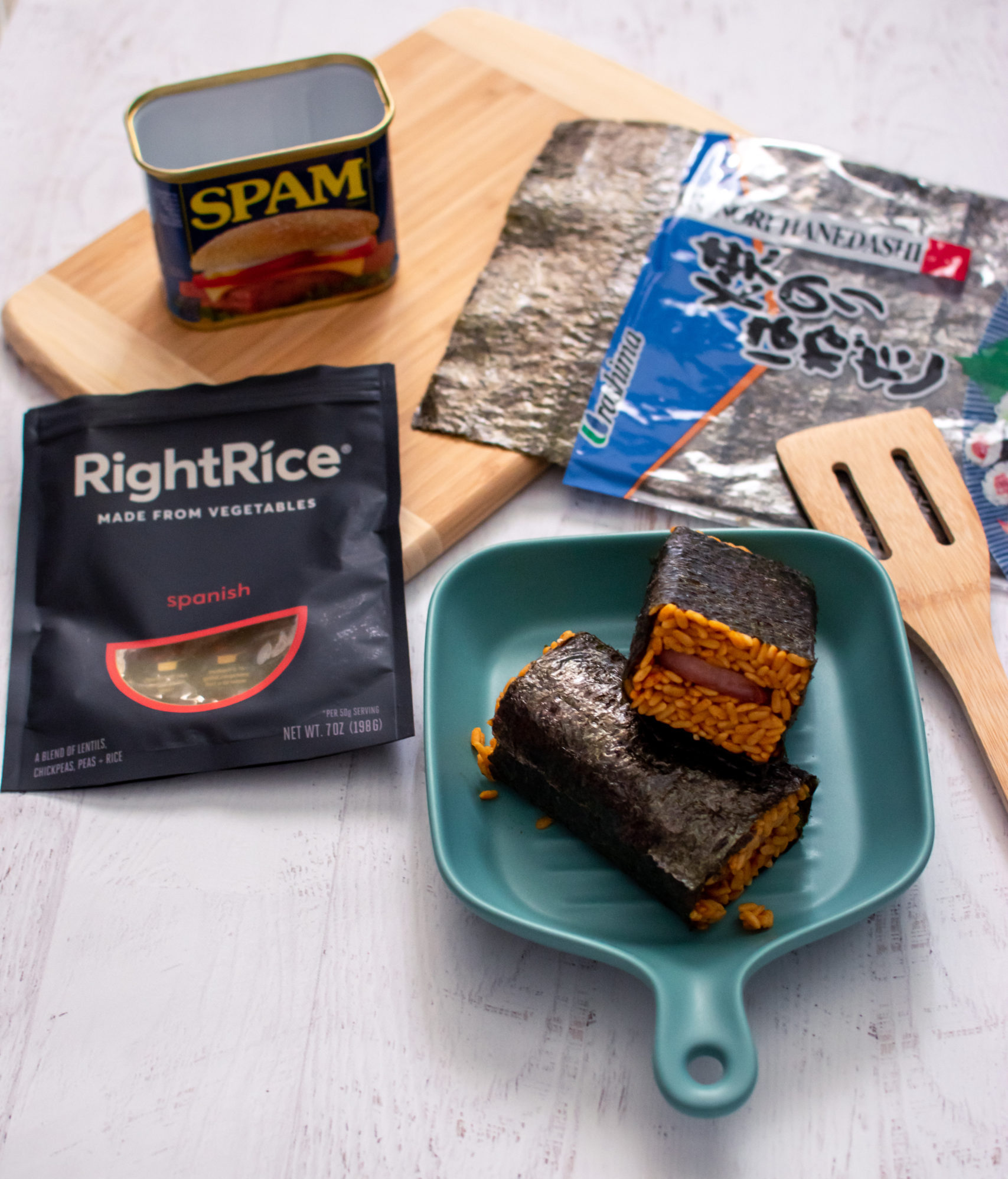Spanish RightRice Spam Musubi?!
I was craving something different for lunch and saw that I had a can of Spam in our pantry. I had been meaning to try the RightRice I got from Grocery Outlet and decided to make a fusion musubi — Spanish style! I was actually pleasantly surprised by the rice and liked the mix of the flavor from the Spanish rice with the Spam.
What is RightRice?
It’s a rice alternative made from lentil, chickpea, and rice flour in addition to pea fiber, sunflower oil, salt, and other flavors (like red bell pepper, tomato, onion, garlic, and chili for the Spanish rice). Because of the fiber and vegetable flour content, it has more protein and fiber than regular white rice; it’s also lower on the Glycemic index. I was intrigued when I saw it at the store and decided to pick up just one pack to try. Big mistake because we’re now sheltering in place and the last time I was able to get to Grocery Outlet, the dried goods aisle was picked clean. I need to try the other flavors! Luckily Amazon has a variety pack of all seven flavors here. *Disclaimer: if you shop the link, I will earn a small commission, and I appreciate your support!
Making RightRice is so easy. I have heard stories of people messing up making rice on a stove, not RightRice! I followed the directions and it came out perfect. Add your water and wait for it to boil. Once the water is boiling, add the RightRice and remove the pot from the heat. Cover it and let sit for 12 minutes. While I was waiting, I was able to prep my Spam.
I sliced up just two pieces for my meal and quickly seared it on the stove top until brown. I set the Spam aside to cool and the 12 minutes for the rice was up. All you have to do is fluff the rice with a fork and let it sit to cool for a few minutes. Now it was time to prepare the assembly of the musubis.

I cut the seaweed sheet in half, placed the musubi press in the middle, and layered rice, Spam, and rice. Press down firmly with the press (but not too hard) and slowly lift the siding. I normally add furikake to my Spam musubi for flavor (it contain seaweed, sesame seeds, salt, etc), so I added it to these, but I forgot how salty Spam is already! I think next time I’m craving Spam musubi, I’ll opt for Spam Lite.
Thank you to Sam Choy’s Poke to the Max for sending me the Spam, musubi press, and furikake! I have a bigger (longer) press at home, but I would have had to cut the roll in half (and possibly made a mess). If I had used my other press, I wold have just used the seaweed sheet whole instead of cutting it in half like I did with the musubi press. Sushi and musubi presses are easily found a local Asian markets, but I’ve linked a couple good options on Amazon here if you’re on the market for one.

I was pleasantly surprised by the RightRice as a viable option for making Spam musubi in addition to the flavor and texture. I could hardly tell I wasn’t eating regular rice; there’s slightly less chew to the grains since it’s made from vegetable protein and fiber, but the difference wasn’t that drastic. I was also worried the rice wouldn’t hold up to be eaten as Spam musubi. It held up, although I did make a mess while eating it. If you’re on the go, you can wrap the end with cling wrap so the contents don’t fall out the bottom. Sushi rice is still probably the best type of rice to use to make sushi and Spam musubi, but if you don’t mind a little mess and want an alternative to regular rice, this works!





